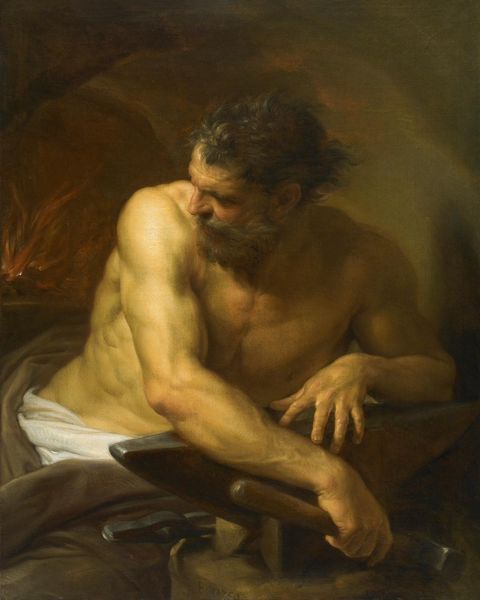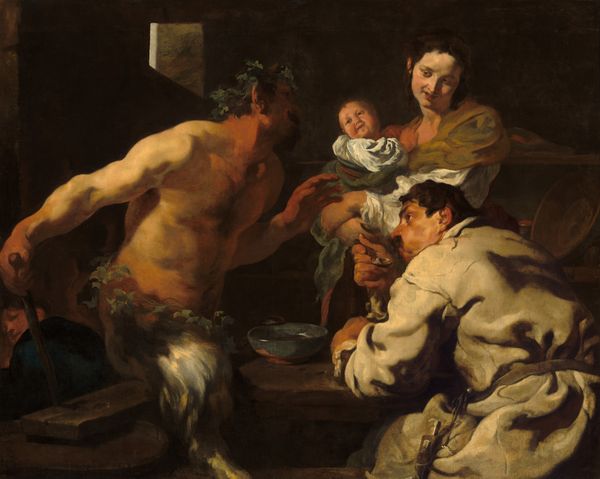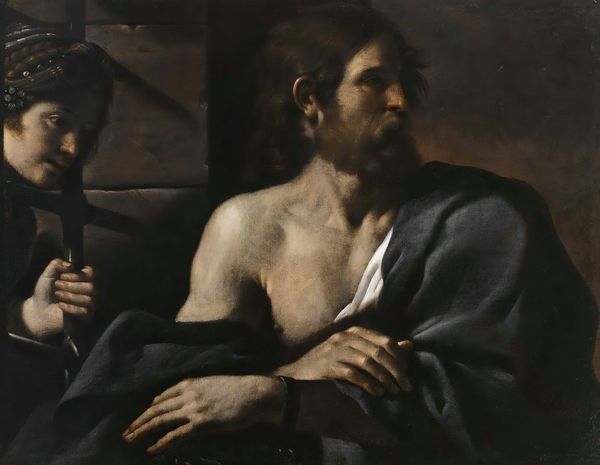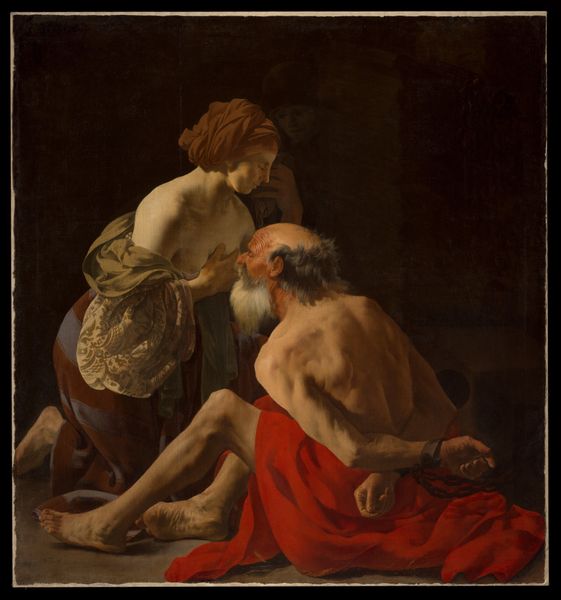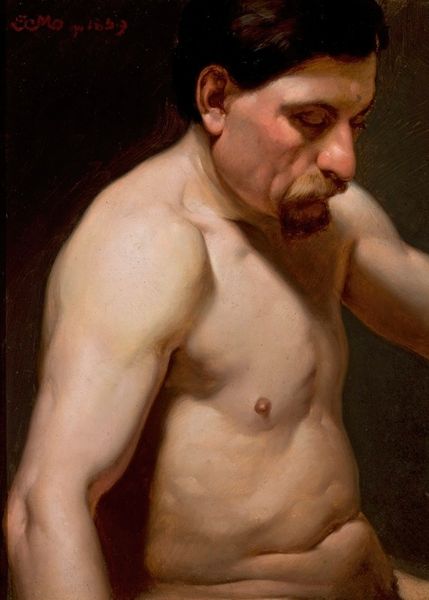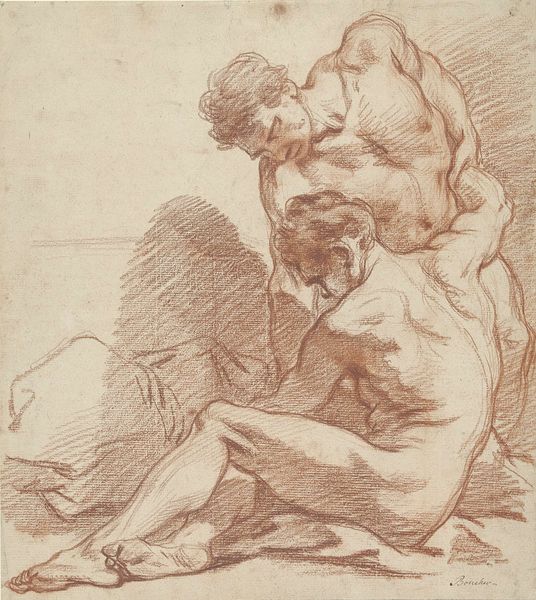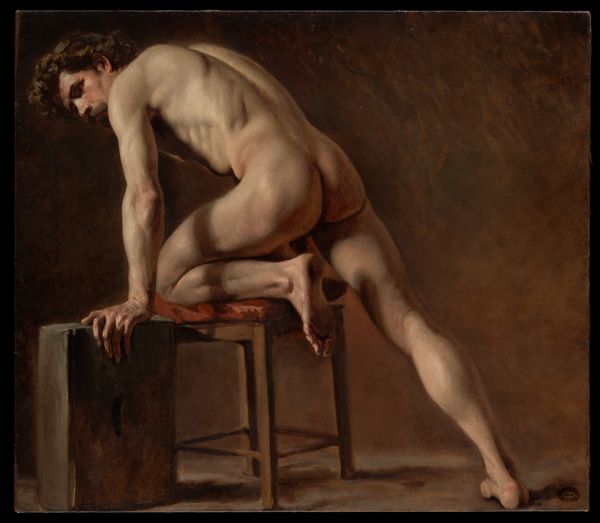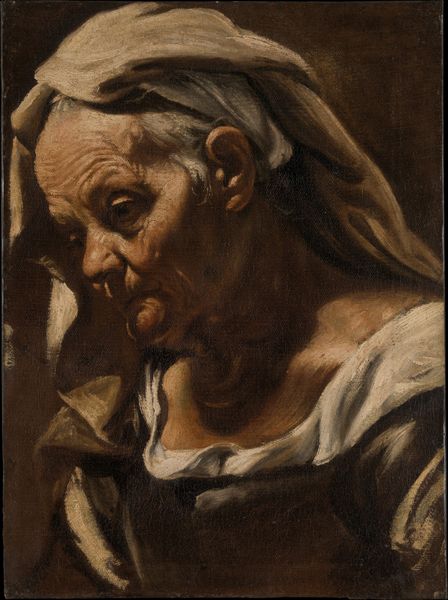
Bust of a Man (Saint Matthias?) 1715 - 1720
0:00
0:00
oil-paint
#
portrait
#
baroque
#
oil-paint
#
chiaroscuro
#
history-painting
Dimensions: 17 1/2 × 14 3/4 in. (44.5 × 37.5 cm)
Copyright: Public Domain
Editor: Here we have Giovanni Battista Piazzetta's oil painting, "Bust of a Man (Saint Matthias?)," created between 1715 and 1720. I'm immediately struck by the dramatic lighting; it creates a really intense and somber mood. What stands out to you in terms of its composition and the use of light? Curator: Indeed, the Baroque sensibilities are at play. Consider the stark contrast – chiaroscuro – between the illuminated flesh and the dark background. This directs our focus entirely onto the subject's pained expression and gesture. The fabric, painted with loose strokes, acts as a textural counterpoint to the smoother handling of the skin. Note how the composition lacks extraneous detail, compelling an almost visceral reading. Does the interplay of light and shadow elicit a certain psychological state? Editor: Absolutely. The dramatic use of light enhances the emotional impact, like a spotlight is aimed at a specific moment, which is very theatrical. But, if we strip that away and just think of light, the geometric arrangement is equally important; a diagonal that cuts across the canvas to brighten the shoulder and lead to his head, the focus is not only on the suffering but its arrangement. Curator: Precisely. This orchestration of light is neither arbitrary nor symbolic, but a highly structured and deliberate formal strategy. The surface qualities, impasto of the paint itself, become part of the expressive content. Have you considered the implied narratives suggested merely through formal elements, without historical reference? Editor: I hadn’t thought about the purely formal components divorced from historical content but seeing the use of chiaroscuro to draw the eye makes me think of all the geometric decisions that went into it. Thanks. Curator: Exactly. Focusing on form allows new ways of interpreting visual meaning.
Comments
No comments
Be the first to comment and join the conversation on the ultimate creative platform.
